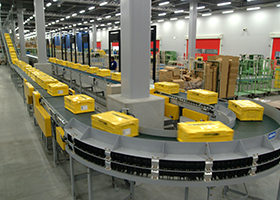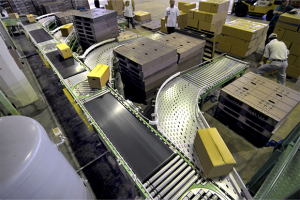
Introduction
The pharmaceutical industry thrives on a delicate balance between efficiency, precision, and strict regulatory adherence. Every step, from drug discovery to manufacturing and distribution, is meticulously monitored to ensure the safety and efficacy of life-saving medications.
As discussed in our article on automation in the food industry, automation is emerging as a powerful force, streamlining processes, enhancing quality control, and accelerating drug development. This article explores five key benefits of automation in pharmaceutical industry, paving the way for a more efficient and patient-centric future.
Enhanced Efficiency and Productivity
The pharmaceutical industry relies heavily on complex, yet repetitive tasks. Automation, such as industrial system integrators, steps in to alleviate this burden, significantly reducing manual labour. Robots excel at tasks like dispensing ingredients, filling vials, and packaging medications with unmatched speed and accuracy.
This frees up human workers for higher-level tasks like quality control and process automation. Additionally, robots can operate 24/7, maximising production capacity and minimising downtime. This translates to faster production cycles, allowing pharmaceutical companies to meet market demands more efficiently.
Automation also extends beyond the manufacturing floor. Advanced systems can optimise logistics and inventory management, ensuring a smooth flow of materials and finished products. With real-time data on stock levels and production schedules, companies can make informed decisions to prevent stockouts and optimise resource allocation.

Improved Accuracy and Quality Control
Human error is an ever-present concern in any manufacturing process. Thankfully, industrial automation solutions minimise this risk. Automated dispensing systems ensure precise measurements of ingredients, eliminating the possibility of human error in critical tasks like mixing and filling. Machine vision technology takes quality control to the next level. These intelligent systems can inspect medications for defects, inconsistencies, or foreign particles at lightning speed, providing real-time feedback and ensuring consistent product quality.
Automation fosters regulatory compliance by creating a documented and auditable trail. Electronic batch records track every step of the manufacturing process, providing a transparent record for regulatory agencies. This level of precision and traceability helps ensure that medications meet the required standards for safety and efficacy.
Reduced Costs and Increased Profitability
While the initial investment in automation can be significant, the long-term cost benefits are undeniable. Automating repetitive tasks reduces labour costs associated with manual processes. Additionally, increased efficiency leads to less waste and improved resource utilisation. By minimising errors and ensuring consistent quality, automation also reduces the costs associated with product recalls and rework.
These cost savings translate into increased profitability for pharmaceutical companies. This allows them to invest in research and development, ultimately leading to the creation of new and innovative drugs. Furthermore, automation frees up resources that can be directed towards patient care and outreach programs.

Faster Drug Discovery and Development
The road from drug discovery to market approval is often long and arduous. Automation can significantly accelerate this process by streamlining tasks like high-throughput screening and data analysis. High-throughput screening involves testing a large number of potential drug candidates against specific targets. Automated systems can perform this task with incredible speed and accuracy, identifying promising candidates for further investigation.
In the laboratory setting, robotics can assist with tasks such as pipetting, cell culture, and sample preparation. This frees up scientists to focus on designing experiments, interpreting results, and advancing the drug development process. By automating these repetitive tasks, researchers can generate more data, leading to faster and more informed decisions during drug development. Ultimately, this translates to getting life-saving medications to patients sooner.
Enhanced Safety for Workers
Pharmaceutical manufacturing often involves handling hazardous materials that can pose serious health risks to workers. Automation removes human workers from these potentially dangerous environments. Robots can handle tasks involving potent drugs, cytotoxic agents, and other hazardous materials with minimal risk of exposure.
Furthermore, automation plays a crucial role in maintaining sterile environments. Robots can perform tasks in clean rooms and aseptic processing areas, minimising the risk of contamination. This not only protects the integrity of the product but also ensures the safety and well-being of workers in the pharmaceutical industry.

Conclusion
The potential of automation in pharmaceutical production extends far beyond the benefits discussed here. As technology continues to evolve, we can expect even greater integration of automation in drug development, particularly in areas like personalised medicine. Imagine a future where automated systems, through artificial intelligence, can tailor medications to an individual’s specific genetic makeup or disease profile.
The future of pharmaceuticals is undoubtedly intertwined with automation. By embracing this technology, pharmaceutical companies can create a more efficient, patient-centric, and ultimately, life-saving industry. Increased automation paves the way for faster drug development, improved medication quality, and a future where innovative treatments reach patients faster than ever before.

